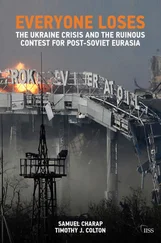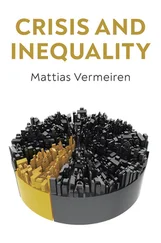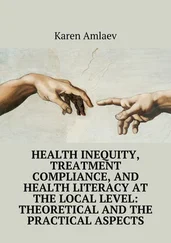1 Cover
2 Series Page IEEE Press 445 Hoes Lane Piscataway, NJ 08854 IEEE Press Editorial Board Ekram Hossain, Editor in Chief Jón Atli Benediktsson Xiaoou Li Jeffrey Reed Anjan Bose Lian Yong Diomidis Spinellis David Alan Grier Andreas Molisch Sarah Spurgeon Elya B. Joffe Saeid Nahavandi Ahmet Murat Tekalp
3 Title Page
4 Copyright Page Copyright © 2022 by The Institute of Electrical and Electronics Engineers, Inc. All rights reserved. Published by John Wiley & Sons, Inc., Hoboken, New Jersey. Published simultaneously in Canada. No part of this publication may be reproduced, stored in a retrieval system, or transmitted in any form or by any means, electronic, mechanical, photocopying, recording, scanning, or otherwise, except as permitted under Section 107 or 108 of the 1976 United States Copyright Act, without either the prior written permission of the Publisher, or authorization through payment of the appropriate per‐copy fee to the Copyright Clearance Center, Inc., 222 Rosewood Drive, Danvers, MA 01923, (978) 750‐8400, fax (978) 750‐4470, or on the web at www.copyright.com . Requests to the Publisher for permission should be addressed to the Permissions Department, John Wiley & Sons, Inc., 111 River Street, Hoboken, NJ 07030, (201) 748‐6011, fax (201) 748‐6008, or online at http://www.wiley.com/go/permission . Limit of Liability/Disclaimer of Warranty: While the publisher and author have used their best efforts in preparing this book, they make no representations or warranties with respect to the accuracy or completeness of the contents of this book and specifically disclaim any implied warranties of merchantability or fitness for a particular purpose. No warranty may be created or extended by sales representatives or written sales materials. The advice and strategies contained herein may not be suitable for your situation. You should consult with a professional where appropriate. Neither the publisher nor author shall be liable for any loss of profit or any other commercial damages, including but not limited to special, incidental, consequential, or other damages. For general information on our other products and services or for technical support, please contact our Customer Care Department within the United States at (800) 762‐2974, outside the United States at (317) 572‐3993 or fax (317) 572‐4002. Wiley also publishes its books in a variety of electronic formats. Some content that appears in print may not be available in electronic formats. For more information about Wiley products, visit our web site at www.wiley.com . Library of Congress Cataloging‐in‐Publication Data is applied for Paperback: 9781119027430 Cover Design: Wiley Cover Image: © Austin Goodwin
5 A Note from the Series Editor
6 Acknowledgments
7 Author Biography
8 1 The Critical Role of Risk, High Concern, and Crisis Communication
1.1 Case Diary: A Collision of Facts and Perceptions 1.2 What Will Readers Find in This Book? 1.3 Why You Will Use This Book 1.4 The Need for This Book – Now
9 2 Core Concepts 2.1 Case Diary: Recognizing Change as a High Concern Issue 2.2 Defining the Concept and Term Risk 2.3 Defining the Concept and Term Risk Communication 2.4 Risk Communication and Its Relationship to Risk Analysis 2.5 Defining the Concepts and Terms High Concern and High Concern Communication 2.6 Defining the Concept and Term Crisis 2.7 Defining the Concept and Term Crisis Communication 2.8 Chapter Resources Endnotes
10 3 An Overview of Risk Communication 3.1 Case Diary: Complex Issues Destroy Homes 3.2 Challenges and Difficulties Faced in Communicating Risk Information 3.3 Changes in How the Brain Processes Information Under Conditions of High Stress 3.4 Risk Communication Theory 3.5 Risk Communication Principles and Guidelines 3.6 Key Takeaway Concepts and Conclusions from this Overview Chapter 3.7 Chapter Resources Endnotes
11 4 Development of Risk Communication Theory and Practice 4.1 Case Diary: Origin Story 4.2 Introduction 4.3 Summary 4.4 Chapter Resources Endnotes
12 5 Stakeholder Engagement and Empowerment 5.1 Case Diary: A Town Hall Public Meeting Goes Very Wrong 5.2 Introduction 5.3 Levels of Stakeholder Engagement 5.4 Benefits of Stakeholder Engagement 5.5 Limitations and Challenges of Stakeholder Engagement 5.6 Techniques and Approaches for Effective Stakeholder Engagement 5.7 Meetings with Stakeholders 5.8 Chapter Resources Endnotes
13 6 Communicating in a Crisis 6.1 Case Diary: The Challenge of Partnership in a Crisis 6.2 The Three Phases of a Crisis 6.3 Communication in the Precrisis Preparedness Phase 6.4 Communications in the Crisis Response Phase 6.5 Communicating Effectively about Blame, Accountability, and Responsibility 6.6 Communicating an Apology 6.7 Communications in the Postcrisis Recovery Phase 6.8 Chapter Resources Endnotes
14 7 Foundational Principles 7.1 Case Diary: “A” Is for “Apples” 7.2 Message Perception and Reception in High Concern Situations 7.3 Message Filter Theory: A Set of Principles Drawn from the Behavioral and Neuroscience Literature 7.4 Case Study: COVID‐19 and Risk Perception Factors 7.5 Message Filters and the Brain 7.6 Message Filters, Perceptions, and Models of Human Behavior 7.7 Message Filters, Perceptions, and Persuasion 7.8 Message Filters, Perceptions, and Ethics 7.9 Message Filters and the Issue of Acceptable Risk 7.10 The Message is in the Mind of the Receiver 7.11 Chapter Resources Endnotes
15 8 Foundational Principles 8.1 Case Diary: A Disease Outbreak in Africa 8.2 Trust Determination 8.3 Characteristics and Attributes of Trust 8.4 Case Study: Trust and the Chernobyl Nuclear Power Plant Accident 8.5 Case Diary: The Fukushima Japan Nuclear Power Plant Accident 27 8.6 Gaining Trust in High‐Stakes Negotiations 8.7 Case Diary: Gaining Trust and the SARS Outbreak in Hong Kong 8.8 Trust and Culture 8.9 Cultural Competency 8.10 Risk Perceptions, Trust, and Cultural Theory 8.11 Risk Perceptions, Trust, and Worldviews 8.12 Case Diary: Fame, Family, and Fear in Public Health Communications 8.13 Chapter Resources Endnotes
16 9 Best Practices for Message Development in High Concern Situations 9.1 Case Diary: Mapping Through a Maze of COVID Confusion 9.2 Introduction 9.3 Crafting Messages in the Context of Stress and High Concern Decision‐Making 9.4 Message Mapping 9.5 Summary 9.6 Chapter ResourcesAppendix 9.1 The 93 most frequently asked questions by journalists and the public following a major crisis, emergency, or disaster. Appendix 9.2 The 400 plus most frequently asked questions following an active shooter incident. Appendix 9.3 Change management: frequently asked questions. Appendix 9.4 The most frequently asked questions at environmental cleanups and hazardous waste sites. Endnotes
17 10 Communicating Numbers, Statistics, and Technical Information about a Risk or Threat 10.1 Case Diary: A Civil Action 10.2 Introduction 10.3 Case Study: Numbers, Statistics, and COVID‐19 10.4 Brain Processes That Filter How Technical Information about Risk or Threat Is Received and Understood 10.5 Challenges in Explaining Technical Information About a Risk or Threat 10.6 Framing 10.7 Technical Jargon 10.8 Information Clarity 10.9 Units of Measurement 10.10 Case Study: Risk Numbers, Risk Statistics, and the Challenger Accident 10.11 Comparisons 10.12 Lessons Learned 10.13 Chapter Resources Endnotes
18 11 Evaluating Risk, High Concern, and Crisis Communications 11.1 Case Diary: Finding the Road to Rio 11.2 Introduction 11.3 Benefits of Evaluation 11.4 Evaluation Practices for Risk, High Concern, and Crisis Communication 11.5 Case Studies of Evaluation Comparison to Best Practice: Hurricane Katrina, COVID‐19 and Vaccination Hesitancy, and Outbreak of COVID‐19 in Wuhan, China 11.6 Barriers and Challenges to Evaluation 11.7 Evaluation Measures 11.8 An Integrated Approach to Evaluation 11.9 Resource: Case Study of Focus Group Testing of Mosquito‐Control Messages, Florida, 2018–2019 36 11.10 Evaluation Tools 11.11 Chapter Resources Endnotes
Читать дальше












